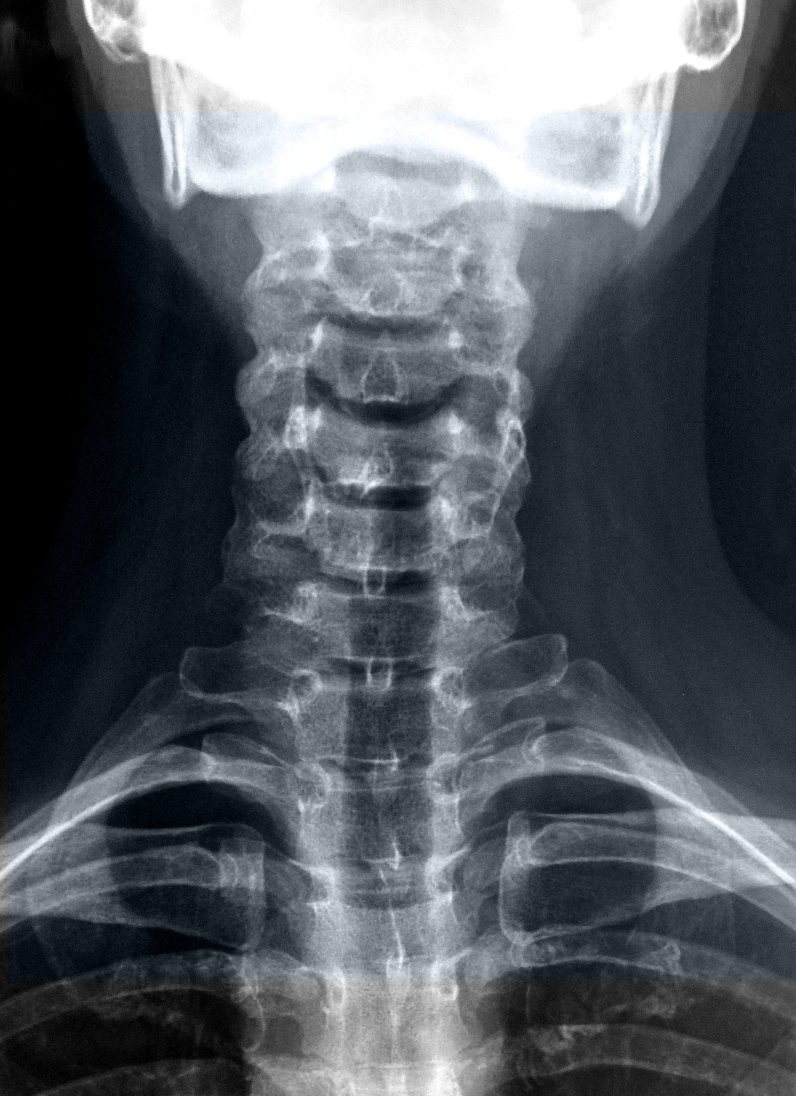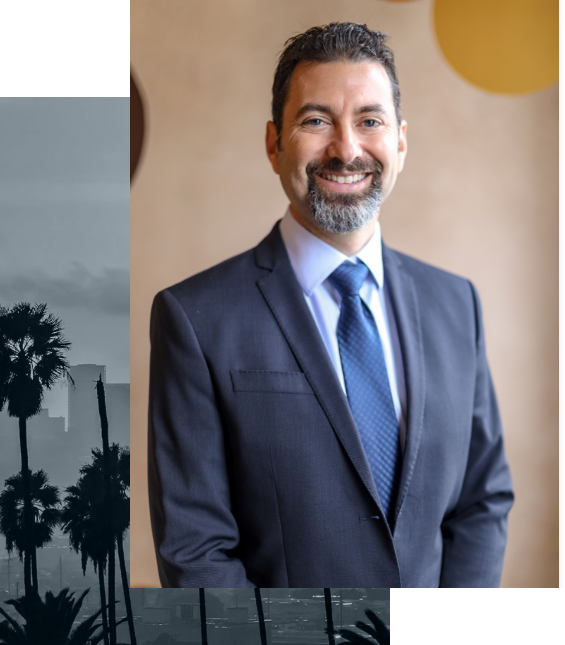TREATMENTS
CERVICAL DISC REPLACEMENT
IN PALM BEACH COUNTY
What Is a Cervical Disc Replacement?
Cervical disc replacement is a surgical procedure designed to treat degenerative disc disease and alleviate symptoms such as neck and arm pain, numbness, and weakness caused by damaged cervical discs in the spine. Unlike traditional fusion surgery, which involves permanently joining vertebrae together, cervical disc replacement aims to preserve spinal motion and flexibility by replacing the diseased disc with an artificial implant. In this comprehensive guide, we will explore the benefits, risks, candidacy criteria, and recovery process associated with cervical disc replacement, providing you with the information you need to make informed decisions about your spinal health.



Introduction to Artificial Disc Replacement
Artificial Disc Replacement (ADR) is a spinal surgery where a damaged or diseased disc is replaced with one made from artificial material. This procedure is also referred to as total disc replacement (TDR), total disc arthroplasty or cervical disc arthroplasty (CDA). This procedure maintains spinal motion, restores disc height and alignment to the spinal region, and allows for patients with neck pain to return to their day-to-day activities.
Artificial Disc Replacement surgery requires highly specialized training and experience. Dr. Jason Cuéllar’s refined technical skills and knowledge have turned him into one of the most sought-after spinal surgeons in the nation. His knowledge is borne out of attending one of the top, most competitive medical training programs in the US: Stanford University Medical School, NYU-Hospital for Joint Diseases residency training program and Cedars-Sinai Medical Center Spinal Surgery Fellowship. He then worked side-by-side with world leading spinal arthroplasty surgeon Dr. Todd Lanman for over 6 years in Beverly Hills. Dr. Cuéllar is now one of the leading ADR surgeons in the country, currently located in the Palm Beach area of South Florida.
Degenerative Disc Disease and its Impact
Degenerative Disc Disease is a spinal condition where the discs between spinal vertebrae begin to deteriorate, fragment or even herniate. This condition can cause chronic pain in the neck - or show no symptoms at all - and lead to numbness, weakness or loss of flexibility.
When considering spinal surgery, it is important to select treatment options that allow for the preservation of motion in the spine. This ability to keep aligned and flexible to the natural movements of the spine will reduce the possibility of further injury or undue stress on other vertebrae in the spine. Keeping our spines flexible and healthy is important to the overall health and well-being of our bodies.
Opting to have an Artificial Disc Replacement spinal surgery is a more technologically advanced alternative to a spinal fusion, and often a safer option for patients suffering from pain caused by a damaged vertebral disc. Although not all patients are qualified for an artificial disc replacement, the procedure puts less stress on neighboring discs and yields better long-term flexibility of the spine for patients.



Understanding Spinal Discs and their Role
Cervical discs are vital components of the spine, situated between the vertebrae in the neck region, known as the cervical spine. These discs consist of a tough outer layer called the annulus fibrosus and a gel-like inner core known as the nucleus pulposus. Their primary function is to provide stability to the spine while allowing for flexibility and motion.
Anatomy of Cervical Discs
Cervical discs are structured to withstand various forces exerted on the spine, including compression, torsion, and bending. The annulus fibrosus, composed of strong fibrous tissue, surrounds the nucleus pulposus, providing support and containment. The nucleus pulposus, rich in water content, acts as a shock absorber, distributing pressure evenly across the disc during movement.
Function of Cervical Discs
Cervical discs play a crucial role in facilitating smooth movement of the neck and head. They absorb shock and distribute forces generated by activities such as walking, running, bending, and lifting. Additionally, cervical discs help maintain proper spinal alignment, preventing excessive wear and tear on the vertebrae and surrounding structures.
Importance of Cervical Disc Health
Maintaining the health and integrity of cervical discs is essential for overall spinal function and mobility. Degenerative changes or injuries to these discs can lead to various spinal conditions, including degenerative disc disease, disc herniation, and spinal stenosis. These conditions often result in symptoms such as neck pain, arm pain, numbness, tingling, and weakness.
Role in Cervical Disc Replacement
When cervical discs become damaged or degenerated, they may require intervention to alleviate symptoms and restore function. Cervical disc replacement is a surgical procedure designed to address these issues while preserving spinal motion and flexibility. By replacing the diseased disc with an artificial implant, cervical disc replacement aims to relieve pain, improve mobility, and enhance overall quality of life for patients with cervical spine disorders.

Treatment Options for Cervical Spine Conditions
NON-SURGICAL APPROACHES
There are several non-surgical options available for treating cervical spine conditions. In some instances, physical therapy can yield very helpful results in diminishing pain in the spine. In addition to physical therapy treatments, your doctor may also recommend pain management through medications to treat your back pain.
SURGICAL INTERVENTIONS
Although Dr. Cuéllar will always advocate for trying non-surgical options first, not every patient’s condition will be helped without surgical intervention.
Cervical Artificial Disc Replacement (ADR)
An Anterior Cervical Disc Replacement surgery is the surgical treatment of choice performed by Dr. Cuéllar and is always the go-to procedure whenever possible. The reason this is the best surgical option is that it maintains normal motion of the spine, enabling the patient to return to all physical activities, including sports, after a recovery period.
Anterior Cervical Discectomy and Fusion (ACDF)
In some cases, an Anterior Cervical Discectomy and Fusion (ACDF) may be the best treatment option to address your pain. During an Anterior Cervical Discectomy and Fusion a surgeon will decompress the spinal cord and nerve roots in the targeted region and then stabilize the corresponding vertebrae. This procedure may become necessary if there is instability of the segment.





Regenerative Medicine for Spinal Conditions
Dr. Cuellar offers A2M or, “Alpha 2 Macroglobulin” injections, an extracellular macromolecule, to treat pain. This relief occurs as the injection neutralizes destructive enzymes in the bloodstream.
The protein molecule in A2M keeps our cartilage healthy. A2M injections offer a new way to treat chronic inflammation around joints and other areas of the body where cartilage has become worn, and everyday scientific study progresses in this field and the way we use A2M injects to treat spinal conditions.
Benefits of Artificial Disc Replacement (ADR) or Total Disc Replacement (TDR):
RESTORING MOTION AND FUNCTIONALITY
Artificial Disc Replacement (ADR) offers not only relief from pain but stability to the spine, restoration of motion and a return to functionality in the region.
REDUCING NECK PAIN AND DISCOMFORT
Living in discomfort and chronic pain does not have to be your daily experience - an Artificial Disc Replacement can reduce your neck pain and help you to restore your strength and alignment.
LONG-TERM CONSIDERATIONS AND BENEFITS
Unlike a spinal fusion, an Artificial Disc Replacement surgery allows your spine to continue to bend, twist and flex normally. Spinal fusion surgery limits the movement of your spine by fusing two vertebrae together, whereas an Artificial Disc Replacement only affects the one vertebral set that houses the diseased or damaged disc. Dr. Cuéllar always does his best to avoid spinal fusion, opting for artificial disc replacement surgery whenever possible.


Cervical Disc Replacement Procedure
The cervical disc replacement procedure, also known as cervical disc arthroplasty, is a surgical technique used to treat degenerative disc disease and alleviate symptoms associated with damaged or diseased cervical discs in the neck. During the procedure, the surgeon makes an incision in the front of the neck to access the cervical spine. The affected disc is then removed, and an artificial implant, typically made of metal or a combination of metal and plastic materials, is inserted into the disc space.
This implant is designed to mimic the function of a natural disc, allowing for continued motion and flexibility in the spine. Once the implant is securely in place, the incision is closed, and the patient is monitored during the recovery period. Cervical disc replacement offers an alternative to traditional fusion surgery, preserving spinal motion and potentially reducing the risk of adjacent segment degeneration while providing pain relief and improved function for eligible candidates.
Artificial Disc Replacement vs. ACDF
During an ACDF a surgeon will implant a bone graft and plate and screws so that vertebrae fuses together, in order to stop painful movement. In a disc replacement, an artificial disc is implanted in order to preserve the movement of the vertebrae. Patients who are suffering from bone spurs or herniated discs are both advised to consider these procedures in order to find permanent pain relief in the region.
An Artificial Disc Replacement usually offers a quicker recovery time (usually a month) than an ACDF because a bone graft must fully harden first. The overall success rate for An Artificial Disc Replacement is approximately 90-95%. Artificial disc replacement surgeries have proved to be safe and effective for the treatment of cervical disc degeneration and have much lower rates of adjacent segment degeneration and repeat operation rates when compared to anterior cervical discectomy and fusion (ACDF) in both short-term and longer-term follow-up studies, over 5 and 10 year periods.

SUCCESS STORIES AND PATIENT EXPERIENCES
SUCCESS STORIES AND PATIENT EXPERIENCES
SUCCESS STORIES AND PATIENT EXPERIENCES
SUCCESS STORIES AND PATIENT EXPERIENCES
“Attentive, knowledgeable, professional, and treats every patient with individual care! Saved my dad’s life with his minimally invasive procedure and his mindfulness of the medication my father was on before procedure. Thank you Dr. Cuéllar!”
- Eleena H.
SUCCESS STORIES AND PATIENT EXPERIENCES
“I had my consult with Dr. Cuellar yesterday and I was very happy with my visit. The consultation was to discuss a potential surgery that would be pretty extensive/ significant. So it was important to me to have an understanding and compassionate provider. Dr. Cuellar did just that.
He had a great way of balancing his intelligence, understanding, and patience and I did not feel as though he was talking 'at me' or 'down to' me. He was allowing me to actively participate in the conversation (unlike most providers I have dealt with in the past). I was able to go through all of my imaging with him and he explained everything thoroughly. He was not trying to persuade me to do the surgery or push me into anything.
If I do decide to do the spinal revision and artificial disc replacement surgery it will most definitely be with him. His staff, Rachel in particular, was also extremely helpful with scheduling and she was prompt with all of her emails and correspondences with me. So far, nothing but good things to say about my visit with Dr. Cuellar”
- F.Q.

ADR Consultation
with Dr. Cuéllar
Some things to consider in the weeks leading up to your surgery include: stop smoking, stop drinking, eat a well-balanced diet, and commit to a rigorous and regular exercise program. Stepping into surgery with your best foot forward will yield the most rapid and effective healing and recovery post-surgery process.
Dr. Cuéllar is passionate about personalized care and has become a much sought-after expert in the field ADR surgery.
His robust patient assessments provide him with the exact information he needs in order to curate a treatment plan for your specific condition, centered around your personal lifestyle. Dr. Cuéllar’s personalized treatment plans lead to optimal results for his patients.
Contact Dr. Cuéllar today and schedule your consultation - a pain-free life is within your grasp.
FREQUENTLY ASKED QUESTIONS
Who qualifies for cervical disc replacement?
Candidates for cervical disc replacement typically have symptomatic degenerative disc disease affecting one or two adjacent cervical discs without significant spinal instability or deformity. They should have failed conservative treatments such as medication, physical therapy, and injections and be in good overall health with no contraindications to surgery. Eligibility is determined through a comprehensive evaluation by a spine specialist.
Who is not a good candidate for cervical disc replacement?
Not all patients are suitable candidates for cervical disc replacement. Individuals with significant spinal instability, severe degenerative changes, spinal deformity, active infection, or poor bone quality may not be ideal candidates. Additionally, patients with multiple-level disc disease or certain medical conditions may be better served by alternative treatments. A thorough evaluation by a spine specialist is necessary to determine candidacy.
Is there an age limit on cervical disc replacement?
There is no strict age limit for cervical disc replacement, as eligibility is based more on overall health and suitability for surgery rather than age alone. However, candidates are generally adults between 18 and 65 years old who have failed conservative treatments for symptomatic cervical disc disease. Older adults may still be considered if they are in good health and meet other criteria.
What is the recovery time for a cervical disc replacement?
The recovery time for cervical disc replacement varies depending on factors such as the patient's overall health, the extent of the surgery, and adherence to post-operative guidelines. In general, patients can expect to return to light activities within a few weeks and resume more strenuous activities gradually over the following months. Full recovery may take several months to a year, during which physical therapy and rehabilitation play a crucial role in optimizing outcomes.
How serious is a cervical disc replacement?
Cervical disc replacement is considered a serious surgical procedure, but it is generally safe and effective when performed by experienced surgeons. Like any surgery, it carries some risks, including infection, bleeding, nerve injury, and implant failure. However, with proper pre-operative evaluation and post-operative care, the majority of patients experience significant improvement in symptoms and function without serious complications.
How successful is cervical disc replacement?
Cervical disc replacement has been shown to be highly successful in relieving symptoms and improving spinal function for many patients with degenerative disc disease. Clinical studies have demonstrated favorable outcomes, including reduced neck and arm pain, preserved motion in the spine, and high patient satisfaction rates. Success rates vary depending on factors such as patient selection, surgical technique, and post-operative care.
Do they cut your neck muscles during cervical disc replacement?
During cervical disc replacement, surgeons typically make an incision in the front of the neck to access the cervical spine. While some muscle tissue may be moved aside or gently retracted to reach the spine, the neck muscles themselves are not cut during the procedure. Minimally invasive techniques may also be utilized to reduce tissue trauma and facilitate quicker recovery.
How long do cervical discs last after replacement?
The longevity of cervical disc replacements varies among individuals and depends on factors such as implant design, patient activity level, and overall spinal health. Many artificial discs are designed to last at least 10 to 15 years, and some patients may experience lasting benefits beyond that timeframe. Regular follow-up with a spine specialist is important for monitoring the implant and addressing any potential issues.
What are the signs you need neck surgery?
Signs that may indicate the need for neck surgery, such as cervical disc replacement, include persistent neck pain, arm pain, numbness, tingling, weakness, and difficulty performing daily activities despite conservative treatments. Additionally, symptoms such as loss of bladder or bowel control, progressive neurological deficits, or spinal cord compression may require urgent surgical intervention.
Can you walk after cervical disc replacement?
Yes, most patients can walk shortly after cervical disc replacement surgery, typically within a few hours to a day post-operation. Walking is encouraged as part of the early recovery process to promote circulation, prevent blood clots, and gradually regain mobility. However, individuals may need to follow activity restrictions and gradually increase their activity level under the guidance of their healthcare team.
Will insurance cover cervical disc surgery?
Coverage for cervical disc surgery, including cervical disc replacement, varies depending on factors such as insurance provider, policy terms, and medical necessity. In many cases, insurance plans may cover a portion of the procedure costs if it's deemed medically necessary and meets specific criteria outlined by the insurer. Patients are advised to check with their insurance provider and healthcare team to understand coverage details and potential out-of-pocket expenses.
Is a disc replacement in the neck considered a major surgery?
Yes, cervical disc replacement is considered a major surgical procedure due to its complexity and potential impact on spinal function. It involves accessing the cervical spine through the front of the neck, removing the damaged disc, and inserting an artificial implant to replace it. While advancements in surgical techniques have led to less invasive approaches, cervical disc replacement still requires careful planning, skilled execution, and comprehensive post-operative care.
IN THE MEDIA






The Latest News, Highlights,
and Insights from Dr. Cuéllar
Our Locations
PALM BEACH COUNTY
PALM BEACH GARDENS
4362 Northlake Blvd, Suite 209
11:30 AM – 7:00 PM Monday-Friday



